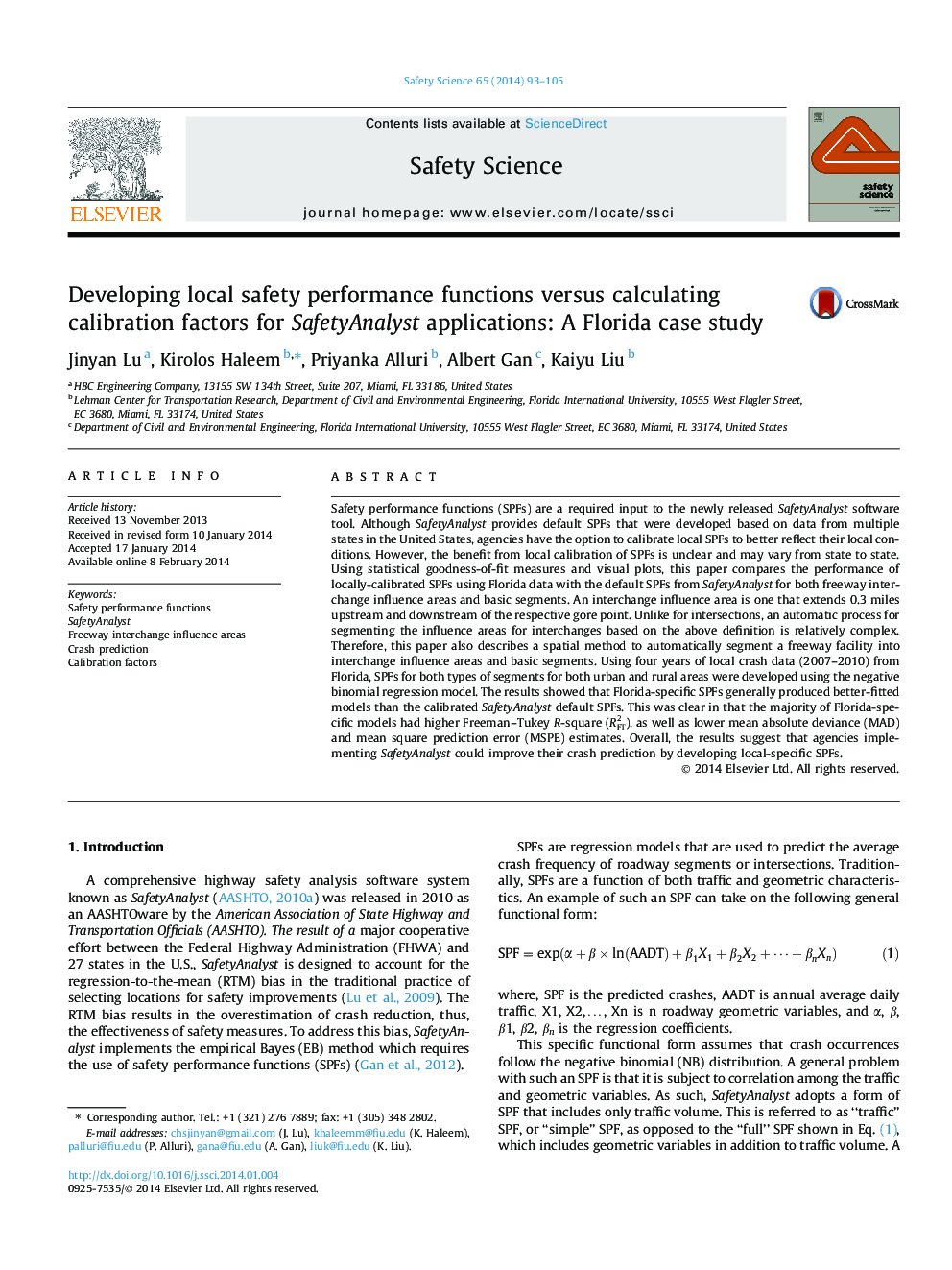| Article ID | Journal | Published Year | Pages | File Type |
|---|---|---|---|---|
| 6976333 | Safety Science | 2014 | 13 Pages |
Abstract
Safety performance functions (SPFs) are a required input to the newly released SafetyAnalyst software tool. Although SafetyAnalyst provides default SPFs that were developed based on data from multiple states in the United States, agencies have the option to calibrate local SPFs to better reflect their local conditions. However, the benefit from local calibration of SPFs is unclear and may vary from state to state. Using statistical goodness-of-fit measures and visual plots, this paper compares the performance of locally-calibrated SPFs using Florida data with the default SPFs from SafetyAnalyst for both freeway interchange influence areas and basic segments. An interchange influence area is one that extends 0.3 miles upstream and downstream of the respective gore point. Unlike for intersections, an automatic process for segmenting the influence areas for interchanges based on the above definition is relatively complex. Therefore, this paper also describes a spatial method to automatically segment a freeway facility into interchange influence areas and basic segments. Using four years of local crash data (2007-2010) from Florida, SPFs for both types of segments for both urban and rural areas were developed using the negative binomial regression model. The results showed that Florida-specific SPFs generally produced better-fitted models than the calibrated SafetyAnalyst default SPFs. This was clear in that the majority of Florida-specific models had higher Freeman-Tukey R-square (RFT2), as well as lower mean absolute deviance (MAD) and mean square prediction error (MSPE) estimates. Overall, the results suggest that agencies implementing SafetyAnalyst could improve their crash prediction by developing local-specific SPFs.
Related Topics
Physical Sciences and Engineering
Chemical Engineering
Chemical Health and Safety
Authors
Jinyan Lu, Kirolos Haleem, Priyanka Alluri, Albert Gan, Kaiyu Liu,
